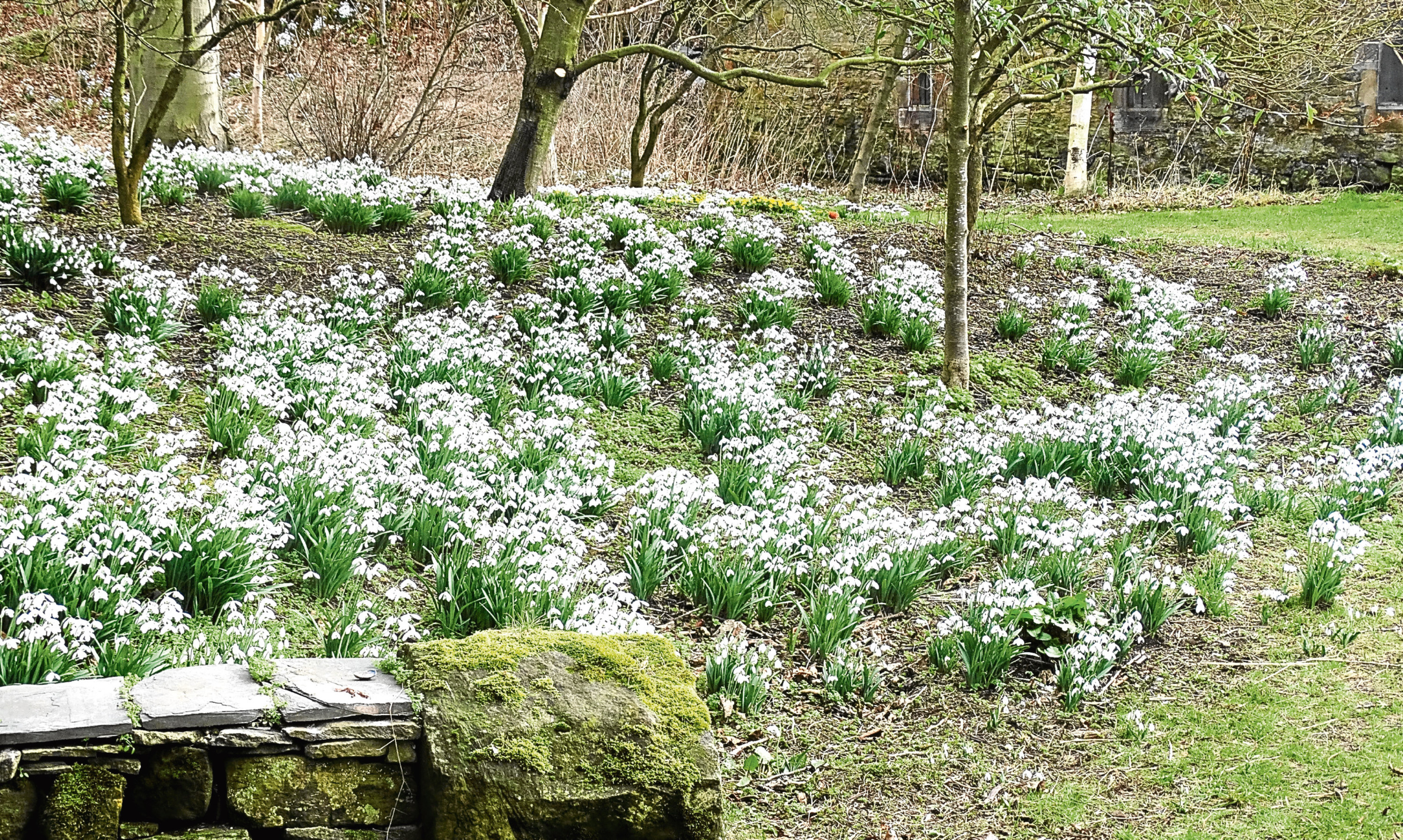Despite the relatively mild winter the countryside has a weary and faded look as if spring can’t come too soon.
The first signs of spring mean different things to different people.
For some it is earlier mornings and lengthening days, for others the appearance of snowdrops.
But that can be a horticultural minefield. I learned long ago not to try and claim the first snowdrop of the season – like cuckoos and swallows, there’s always someone who got there earlier. Several years ago a St Cyrus reader told me her first snowdrops appeared on Hogmanay.
The later-flowering yellow aconites might be a better guide. Yellow and blue are my spring colours, so perhaps the first signs are yellow primroses and blue crocus.
Out walking with Inka I’ve seen patches of our native pink butterbur which is one of the earliest woodland plants to flower. It’s not the bonniest flower in the woodland margins but it’s a certain herald of spring and will carry on flowering until May.
And I can’t dismiss the Hellebores – one of the earliest garden flowers – which my mother called Christmas roses and the Doyenne calls Lenten lilies. All of which is rather confusing as wild daffodils are sometimes known as Lent lilies.
It isn’t a flower that heralds spring for me. For the past 10 years I’ve walked dogs round the small loch at the foot of the Glenesk.
Each year, at this time, a flock of oystercatchers return to the lochan after overwintering at the coast. They head there when winter frosts threaten to freeze the inland marshes and muddy banks where they probe with their long orange bill for worms and insects. They come back to nest.
The oystercatchers’ arrival tells me that spring may not be just around the corner, but it is on its way.
They are sociable birds, preening and feeding together and suddenly, for no apparent reason, rising to circle round the loch, flying so low over the water you’d think at least one must catch a wingtip and tumble in. They land again with a chorus of piping calls – kleep, kleep, kleep – which briefly rises in volume and then dies away.
Their name is a misnomer really as there is no evidence that I am aware of, that the oystercatcher’s beak is strong enough to prise open an oyster shell.
There’s lots of activity on and around the lochan right now and I’ve spent more time there than usual, sitting for an hour or so and watching and listening.
Musical whee-oo whistles give away the drake wigeon before we reach the loch. Their chestnut heads with the conspicuous light buff crest of feathers are easily recognisable from a distance.
However carefully I approach I always disturb a pack of wary teal which take flight as soon as we appear. I hear the rush of wind under their wings as they wheel and turn and twist above me in a display of precision flying, too cagey to land on the water so long as Inka and I are there.
I only ever see dabchicks, or little grebes, up there at this time of year. They are dumpy little diving ducks and there are certainly two on the loch at the moment.
There could be more because they can stay underwater for extended periods and where they surface may be a considerable distance from where they dived.
And, of course, there are the resident mallard and what I have come to regard as resident tufted duck. The male tufted duck are snappy dressers like the oystercatchers – sharply defined black plumage on top and white flanks below. The females are a less conspicuous dark brown plumage all over.
A creaky call tells me a coot is tucked out of sight in the reeds on the far bank. The white wattle above their beak gives rise to the expression bald as a coot and identifies them from the moorhen, or waterhen, which has a red wattle.
Plumes of smoke drifting across the brae faces of the Angus glens are another clue that the seasons will soon be changing.
It’s muirburn, a controlled programme of burning old, rank heather, carried out by gamekeepers to improve moorland biodiversity and encourage growth of new, green heather shoots which are a mainstay of the red grouse diet. Just like us humans, grouse enjoy nothing better than fresh, organic food.
Cambo Estate, near St Andrews, is home to the National Snowdrop Collection of more than 350 different varieties.
Last weekend the Doyenne and I visited the gardens which are hosting their annual Snowdrop Festival.
It had been too long since we were last in Fife. It’s a bonny county and its soft, rolling landscape is a great contrast to the Grampian foothills which are our usual outlook.
The woods and gardens round the house are carpeted with snowdrops and golden splashes of aconites.
Woodland walks take you down to the seashore and Inka got a good run on the beach. We’ve pencilled in another trip to Fife when spring really has turned the corner.
